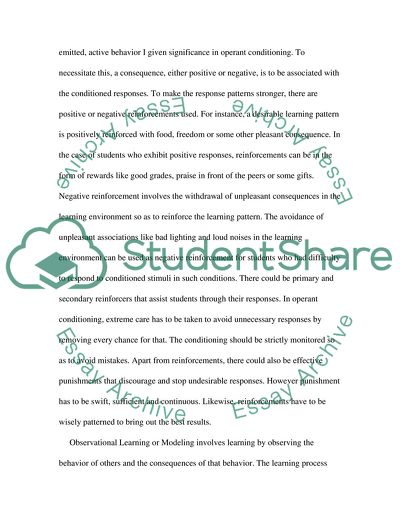List and describe forms of learning: Essay Example | Topics and Well Written Essays - 750 words. https://studentshare.org/miscellaneous/1712689-list-and-describe-forms-of-learning-classicaloperantobservationaland-cognitiveinsight-or-latent
List and Describe Forms of Learning: Essay Example | Topics and Well Written Essays - 750 Words. https://studentshare.org/miscellaneous/1712689-list-and-describe-forms-of-learning-classicaloperantobservationaland-cognitiveinsight-or-latent.


